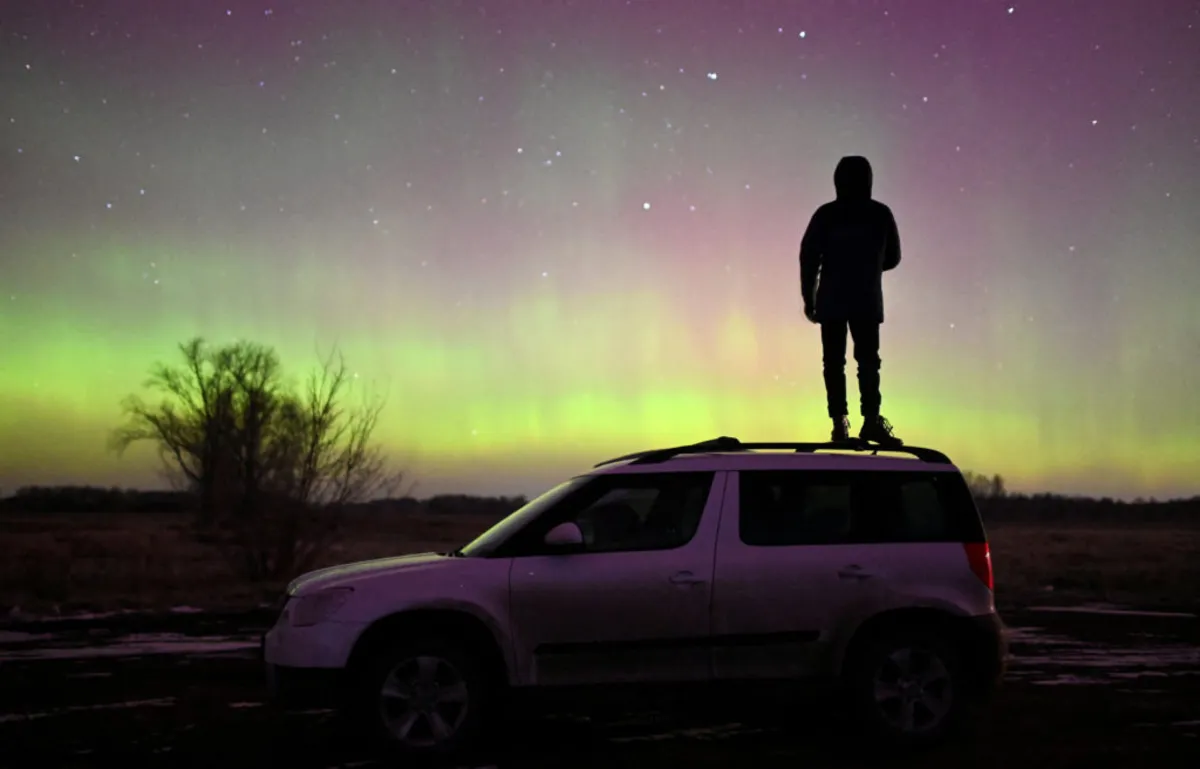
On Tuesday, space weather forecasters issued a significant alert for incoming severe solar storms that could illuminate the night sky with colorful northern lights and temporarily disrupt various communications. Recent days have seen the sun emit a series of energy bursts, known as coronal mass ejections, which are expected to reach Earth by Tuesday night and into early Wednesday morning. According to experts from the National Oceanic and Atmospheric Administration (NOAA), these potential geomagnetic storms could interfere with radio and GPS communications.
The intensity and visibility of the auroras will largely depend on the timing of these solar bursts and their interaction with Earth’s atmosphere. Forecasters suggest that the vibrant displays could be seen across a vast portion of the northern United States, extending as far south as Alabama and Northern California. This remarkable phenomenon occurs when charged particles from the sun collide with Earth’s atmosphere, creating stunning light displays known as the aurora borealis in the northern hemisphere and the aurora australis in the south.
Currently, the sun is at the peak of its 11-year activity cycle, making the occurrence of these light displays more frequent and widespread. Space weather experts indicate that colorful northern lights have been observed in areas where they are typically rare, and they anticipate more auroras in the near future. This cycle is characterized by a magnetic pole reversal that generates numerous magnetic twists and tangles, further contributing to the frequency of auroras.
Last year, a powerful geomagnetic storm, the strongest in two decades, impacted Earth, resulting in spectacular light displays across the Northern Hemisphere. Following that event, another major solar storm surprised skywatchers with dazzling lights appearing in locations far from the Arctic Circle, including Germany, the United Kingdom, New England, and New York City. Experts predict that the sun's active phase will continue at least until the end of this year; however, the exact timing of peak solar activity remains uncertain.
While solar storms often bring beautiful displays, they can also have serious implications for Earth. Fast-moving particles and plasma from the sun can disrupt the power grid and interfere with air traffic control radio, as well as satellites in orbit. Severe storms are capable of scrambling communication systems, including radio and GPS services. Historical events like the 1859 solar storm, which triggered auroras as far south as Hawaii and caused telegraph lines to ignite, underscore the potential impact of these solar events.
If you’re eager to witness the northern lights, forecasts are available on NOAA’s Space Weather Prediction Center website and through various aurora forecasting apps. To enhance your experience, consider finding a quiet, dark area away from city lights for optimal viewing. National and local parks often provide ideal locations for sky gazing. Additionally, checking the weather forecast is crucial, as cloud cover can obscure this breathtaking spectacle. Interestingly, using a smartphone camera may capture hints of the aurora that are not visible to the naked eye.
A free press is a cornerstone of a healthy democracy. Support trusted journalism and civil dialogue.